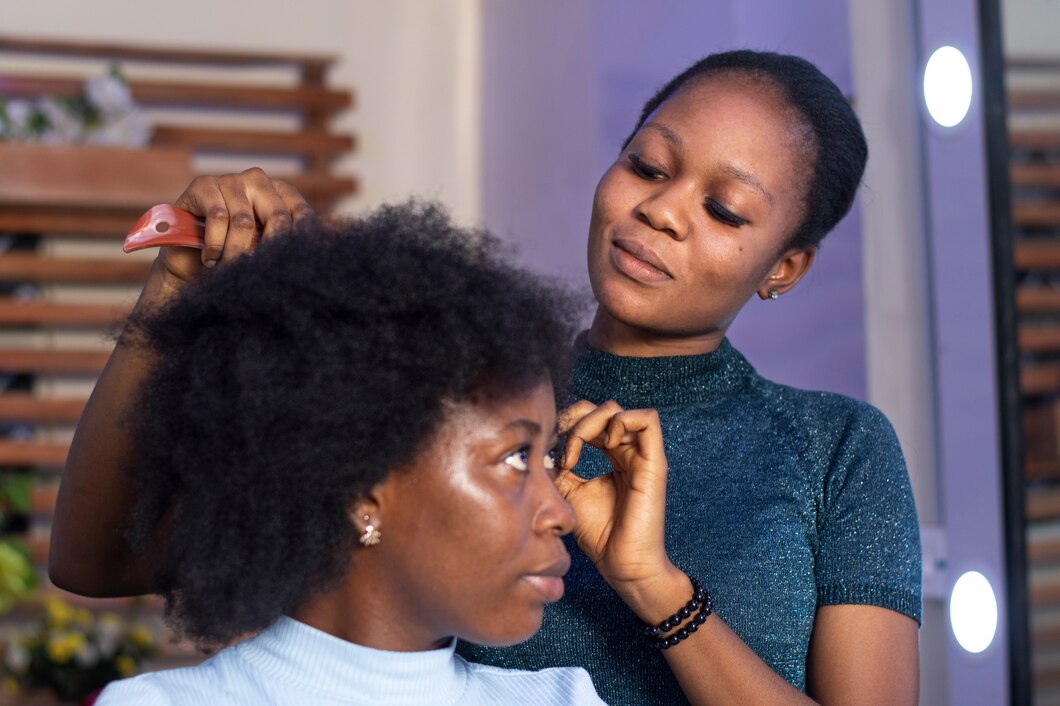Transitioning to natural hair is a transformative journey that many individuals embark on for various reasons, including embracing their natural texture, seeking healthier hair, or simply exploring a new look. While the process can be rewarding, it also comes with its own set of challenges. Here are some tips and tricks to ensure a smooth and successful transition to natural hair.
1. Educate Yourself
Before you begin your transition, it’s essential to educate yourself about natural hair. Understand the different textures and curl patterns, and learn about the specific needs of natural hair. Resources such as books, YouTube tutorials, blogs, and social media can provide valuable information and inspiration.
2. Set Realistic Expectations
Transitioning to natural hair is a process that takes time and patience. Your hair will go through various stages, and it’s important to set realistic expectations. Understand that your hair won’t change overnight and that the journey may involve trial and error to find what works best for you.
3. Create a Hair Care Routine
Developing a consistent hair care routine is crucial for a smooth transition. Focus on moisturizing and protecting your hair, as natural hair tends to be drier than chemically treated hair. Incorporate regular deep conditioning treatments, leave-in conditioners, and oils to keep your hair hydrated and healthy.
4. Minimize Heat Styling
Heat styling can cause damage and hinder your transition process. Try to minimize the use of flat irons, curling irons, and blow dryers. Instead, opt for heatless styling methods such as twist-outs, braid-outs, or roller sets. If you must use heat, always apply a heat protectant.
5. Trim Regularly
As you transition, you’ll need to trim the ends of your hair to gradually remove the chemically treated or damaged parts. Regular trims will help prevent split ends and breakage, making the transition smoother. Consider trimming your hair every 6-8 weeks or as needed.
6. Protect Your Hair at Night
Protecting your hair while you sleep is essential to prevent breakage and retain moisture. Use a satin or silk bonnet, scarf, or pillowcase to reduce friction and keep your hair hydrated. Additionally, consider protective styles like braids or twists to minimize manipulation.
7. Experiment with Protective Styles
Protective styles can be a lifesaver during your transition. Styles like braids, twists, buns, and wigs can help protect your hair from damage and reduce the need for daily styling. These styles also give your hair a break and promote growth.
8. Be Gentle with Your Hair
Natural hair can be fragile, so it’s important to handle it with care. Avoid rough brushing or combing, and detangle your hair gently using a wide-tooth comb or your fingers. Always start detangling from the ends and work your way up to the roots.
9. Listen to Your Hair
Pay attention to your hair’s needs and adjust your routine accordingly. If your hair feels dry, increase your moisturizing treatments. If you’re experiencing breakage, evaluate your styling methods and products. Your hair will give you signals about what it needs, so be attentive and responsive.
10. Find a Support System
Transitioning to natural hair can be challenging, but having a support system can make a significant difference. Connect with others who are on a similar journey through online communities, social media, or local meetups. Sharing experiences, tips, and encouragement can provide motivation and make the process more enjoyable.
11. Celebrate Your Progress
Every step of your transition journey is a milestone worth celebrating. Document your progress with photos, and take note of the improvements in your hair’s health and appearance. Celebrate the small victories and stay positive throughout the process.
Transitioning to natural hair is a personal and empowering journey that requires patience, dedication, and care. By educating yourself, setting realistic expectations, and developing a consistent hair care routine, you can navigate the transition smoothly. Embrace protective styles, be gentle with your hair, and find a supportive community to share your journey with. Remember, the goal is not just to reach the end but to enjoy and learn from the process. Celebrate your natural beauty and the uniqueness of your hair at every stage.








